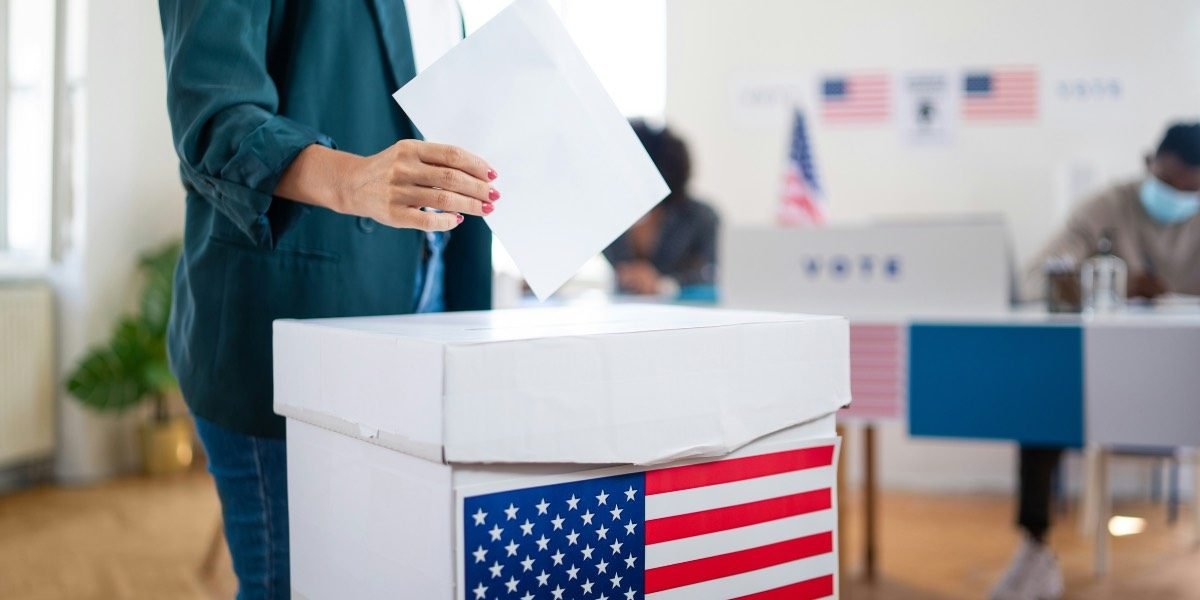Election year volatility is a term that frequently arises in discussions about financial markets during an election cycle. It refers to the potential fluctuations in market performance that stem from uncertainty around political outcomes, economic policy shifts, and overall changes in leadership. Given the inherent unpredictability of elections, it is understandable that market participants may experience heightened concern about the stability of the market during this period. However, the relationship between election year volatility and market stability is nuanced and warrants a closer look.
Read also: Surviving a Stock Market Crash: What You Can Do to Protect Your Investments
What Contributes to Election Year Volatility?
Election year volatility is driven by several factors, with political uncertainty being one of the most significant contributors. As the election approaches, the prospect of new leadership and shifting policies creates an environment of unpredictability. Investors and market participants are often left uncertain about how future economic policies might unfold, including changes to taxation, fiscal spending, regulatory environments, or international trade agreements. This uncertainty can provoke volatility, as markets are highly sensitive to perceived risks.
However, it is important to note that not all election years exhibit the same level of volatility. The political climate, the candidates’ platforms, and the expected changes to the economic landscape can all play varying roles. While some elections have resulted in dramatic market fluctuations, others have seen relatively mild movements. The way the market reacts often depends on the specific political context and how investors assess the potential outcomes of the election.
Why Do Markets Respond to Political Events?
Markets, especially stock markets, are often considered a reflection of investor sentiment. This sentiment can be influenced by political events, such as elections, due to the potential for policy changes. As elections bring with them the possibility of altering economic strategies, regulations, or international relations, investors may adjust their portfolios in anticipation of how these changes could affect market dynamics.
The behavior of investors during election years tends to fluctuate as uncertainty increases. When there is significant ambiguity surrounding the results of an election, particularly if the race is tight, market participants may adopt a more cautious approach. This caution often results in reduced investment in riskier assets, such as stocks, and an increased interest in perceived safer options, such as government bonds or precious metals. Consequently, the stock market may experience periods of heightened volatility as the electorate’s choice becomes clearer.
Is Election Year Volatility Consistently Aligned with Market Performance?
Although election year volatility is often discussed in the context of market fluctuations, it is not necessarily indicative of negative market performance. In some cases, markets may experience a downturn during an election year, while in others, they may show resilience or even growth. The notion that election years consistently lead to poor market outcomes is not a universally agreed-upon view.
Certain historical trends suggest that markets have the potential to recover quickly after an election, especially once the results are known, and the political landscape stabilizes. After the election outcome is confirmed, investors are better able to make decisions based on the certainty of the new administration’s policies. If the market anticipates that the outcome will lead to favorable economic conditions, a period of market optimism may follow.
On the other hand, the immediate aftermath of an election can also lead to continued volatility if the results are perceived as uncertain or if political gridlock persists. This uncertainty can be especially pronounced when the election outcome leaves unclear the direction of key economic policies, such as taxation or government spending.
What Role Does Political Polarization Play in Election Year Volatility?
In recent years, political polarization has become an increasingly relevant factor in the context of election year volatility. When elections are highly polarized, the divergence in policy proposals between candidates can amplify uncertainty in the markets. Investors may find it more difficult to predict which policies will be enacted and how they will impact the broader economy. This can lead to heightened market fluctuations as the outcome of the election becomes a focal point for investors’ fears and expectations.
In polarized environments, market movements may become more exaggerated as investors attempt to price in the potential risks associated with each possible outcome. Political debates, public opinion, and campaign promises can create rapid shifts in sentiment that drive market swings, particularly when investors are unsure which candidate will ultimately secure victory.
Are All Markets Affected Similarly During Election Years?
Not all financial markets react to election year volatility in the same manner. While stock markets may be the most visible and frequently analyzed, other asset classes, such as bonds, commodities, and foreign exchange markets, can also experience their own form of volatility during an election year. However, the extent of this volatility often varies depending on the market and its sensitivity to political developments.
For example, in the bond market, investor behavior may shift as uncertainty about fiscal policies and government debt levels rises. The potential for policy changes that could affect interest rates or inflation might prompt investors to reassess their bond holdings. Similarly, commodities markets may experience volatility, especially if there are significant concerns about trade relations or supply chain disruptions resulting from changes in government policies.
The foreign exchange market is particularly sensitive to election year volatility, as currency values can be influenced by shifts in trade policies, fiscal spending, or even broader geopolitical risks. A major policy shift or international tension arising from an election outcome can result in changes to a country’s currency value, as investors re-evaluate the economic outlook for that nation. However, the impact of election results on currency values is highly context-dependent and can vary widely from one election cycle to another.
How Does Election Year Volatility Influence Long-Term Market Trends?
The impact of election year volatility on long-term market trends tends to be limited, especially if one takes a broader view of market performance. While election years can introduce short-term instability, the long-term trajectory of markets is often determined by more fundamental economic factors, such as productivity growth, interest rates, and global economic conditions.
Over time, markets have demonstrated resilience in recovering from short-term shocks, including those associated with political events. Investors who focus on long-term goals may not be as concerned with the temporary fluctuations caused by election year volatility. Historically, markets have tended to rebound and stabilize after the election process is concluded and the political environment becomes clearer.
However, it should be acknowledged that the degree to which elections influence long-term trends depends on the specific outcomes and the policies that emerge as a result. If the election leads to significant shifts in economic policy that have far-reaching consequences, such as tax reforms or changes to international trade, there could be lasting effects on market conditions. But even in such cases, markets generally adjust over time to incorporate these changes into their broader outlook.
Can Investors Manage Election Year Volatility?
Although election year volatility can create challenges for investors, there are ways to navigate the uncertainty that comes with political elections. One common approach involves maintaining a diversified portfolio. By holding a range of different assets—stocks, bonds, and perhaps commodities—investors may reduce their exposure to the risk of sharp market movements in any single asset class.
Additionally, some investors may choose to employ hedging strategies, such as options or futures contracts, to mitigate the potential downside risk during periods of heightened market volatility. While these strategies do not eliminate the risk altogether, they can offer some level of protection if the market reacts negatively to election results.
It is also crucial for investors to maintain a long-term perspective. While election years can create turbulence in the short term, history suggests that markets generally stabilize after the election, with many investors returning to their regular investment strategies once the political landscape settles.
Do Election Year Volatility and Market Opportunities Go Hand in Hand?
While election year volatility often leads to uncertainty, it also creates opportunities for investors who are well-positioned to take advantage of market inefficiencies. During periods of heightened volatility, some assets may become undervalued as fear drives prices down. Investors who remain focused on long-term fundamentals may find these periods of uncertainty an opportune time to acquire assets at lower prices.
However, it is important to approach these opportunities with caution. Market movements driven by political uncertainty can be unpredictable, and any investment decision should consider the broader economic context, as well as the specific risks associated with the election cycle. Investors who are willing to embrace this uncertainty may benefit from potential price corrections but should be aware of the risks inherent in trading during volatile times.
Read also: The Continued Impact of Inflation on the Economy
Election Year Volatility: A Complex Relationship with Market Stability
The relationship between election year volatility and market stability is inherently complex. While elections often introduce political and economic uncertainty that can influence market behavior, the ultimate impact on long-term stability is less clear. Markets may experience short-term fluctuations, but these are not necessarily indicative of a larger trend. Understanding the factors at play during an election year—ranging from political polarization to investor sentiment—can help investors navigate the volatility that often accompanies this period. Ultimately, investors who remain focused on their long-term goals and who diversify their portfolios may be better equipped to handle the ups and downs associated with election-year market movements.







